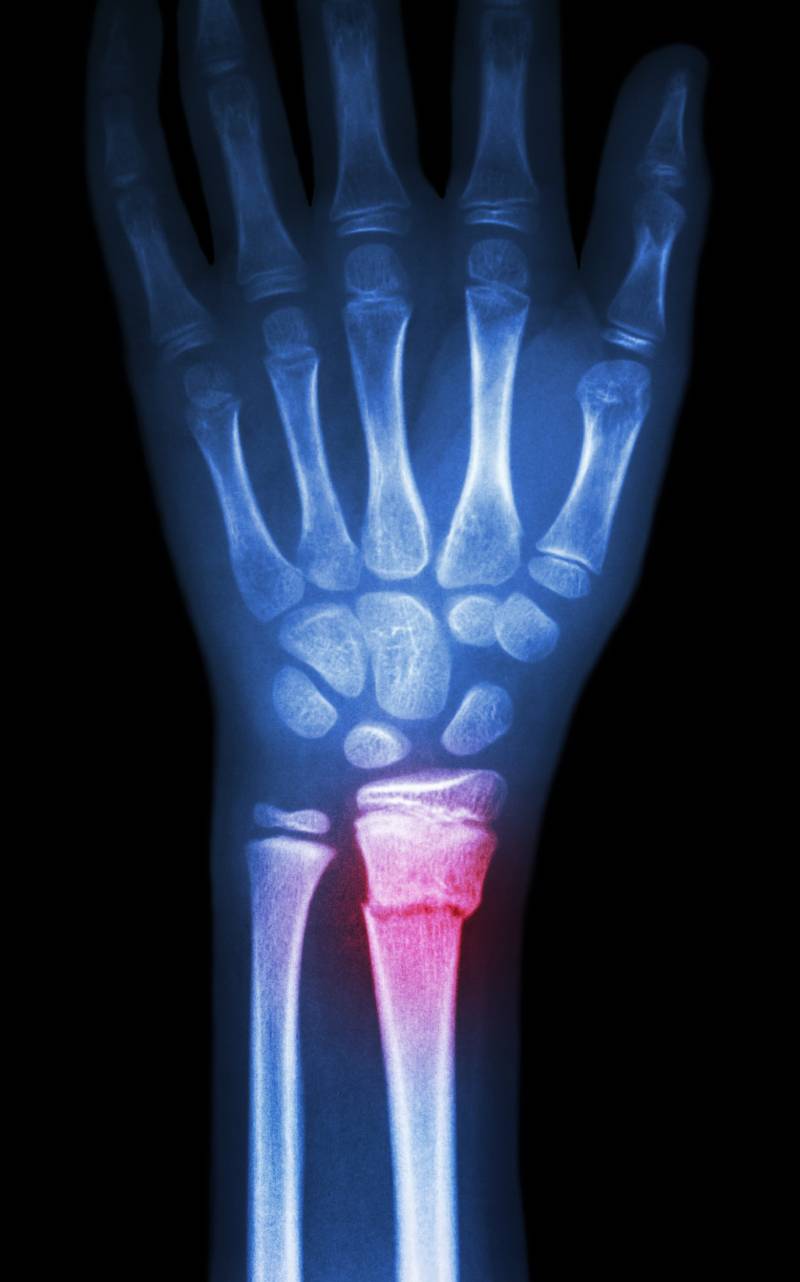Distal radius fractures, or breaks in the radius bone of the arm close to the wrist, are among the most common types of bone fractures. Many of these fractures, particularly if they are displaced (i.e., if the bone fragments on either side of the break are not aligned), require surgery, known as distal radius repair, to ensure proper setting and healing of the radius.1 There are several options for anesthesia during radius repair—most notably general anesthesia, local anesthesia, and peripheral nerve blocking (a specific type of local anesthesia)—and recent studies have begun to evaluate the benefits and drawbacks of each approach, particularly with regard to pain control, postoperative functional outcomes, and length of stay.
Some studies have identified better clinical outcomes for distal radius repair with local, rather than general, anesthesia. For instance, Egol et al. collected data from 187 patients and found that patients who received local anesthesia had improved wrist and finger range of motion compared with patients who received general anesthesia and also showed higher functional scores (as measured by Disabilities of the Arm, Shoulder and Hand) at 3- and 6-month follow-ups.2 In contrast, Rundgren et al. found using a single-center randomized clinical trial of 88 patients that, while local anesthesia appeared to significantly reduce early patterns of postoperative pain and opioid consumption after radius repair, neither total opioid consumption nor longer-term functional outcomes differed significantly between the local and general anesthesia groups.3
Peripheral nerve blocking, a type of local anesthesia, has also recently been employed in comparison studies with general anesthesia to examine its effects on outcomes following distal radius repair. For example, Galos et al. conducted a randomized controlled study of 36 patients to answer four questions: (1) whether patients receiving general anesthesia or brachial plexus blockade (a type of peripheral nerve blockade administered through a single infraclavicular shot) had worse pain scores at various time points, (2) whether there was a difference in operating suite time and recovery room time between the two groups, (3) whether either group experienced higher postoperative narcotic use, and (4) whether either group displayed higher functional assessment scores 6 and 12 weeks after surgery. The researchers found that patients who received general anesthesia had worse pain 2 hours postoperatively, while patients who received a brachial plexus blockade reported worse pain 12 hours postoperatively, suggesting that “rebound pain” ought to be taken into consideration when employing peripheral nerve blocking. Both time in the recovery room and overall amount of narcotics consumed was higher for patients who received general anesthesia, but functional scores did not differ between the two groups.4
In addition, Johnson et al. found this past year, based on a review of 80 patients, that patients who were treated with peripheral nerve blocking reported a significant decrease in postoperative pain at discharge as well as decreased length of stay. These researchers reported one minor complication with peripheral nerve blocking: a short-lived skin irritation at the site of injection.5
References
(1) Distal Radius Fracture (Wrist Fracture) | Johns Hopkins Medicine https://www.hopkinsmedicine.org/health/conditions-and-diseases/distal-radius-fracture-wrist-fracture.
(2) Egol, K. A.; Soojian, M. G.; Walsh, M.; Katz, J.; Rosenberg, A. D.; Paksima, N. Regional Anesthesia Improves Outcome After Distal Radius Fracture Fixation Over General Anesthesia. Journal of Orthopaedic Trauma 2012, 26 (9), 545–549. https://doi.org/10.1097/BOT.0b013e318238becb.
(3) Rundgren, J.; Mellstrand Navarro, C.; Ponzer, S.; Regberg, A.; Serenius, S.; Enocson, A. Regional or General Anesthesia in the Surgical Treatment of Distal Radial Fractures: A Randomized Clinical Trial. The Journal of Bone and Joint Surgery 2019, 101 (13), 1168–1176. https://doi.org/10.2106/JBJS.18.00984.
(4) Galos, D. K.; Taormina, D. P.; Crespo, A.; Ding, D. Y.; Sapienza, A.; Jain, S.; Tejwani, N. C. Does Brachial Plexus Blockade Result in Improved Pain Scores After Distal Radius Fracture Fixation? A Randomized Trial. Clinical Orthopaedics & Related Research 2016, 474 (5), 1247–1254. https://doi.org/10.1007/s11999-016-4735-1.
(5) Johnson, P.; Hustedt, J.; Matiski, T.; Childers, R.; Lederman, E. Improvement in Postoperative Pain Control and Length of Stay With Peripheral Nerve Block Prior to Distal Radius Repair. Orthopedics 2020, 43 (6). https://doi.org/10.3928/01477447-20200721-14.
